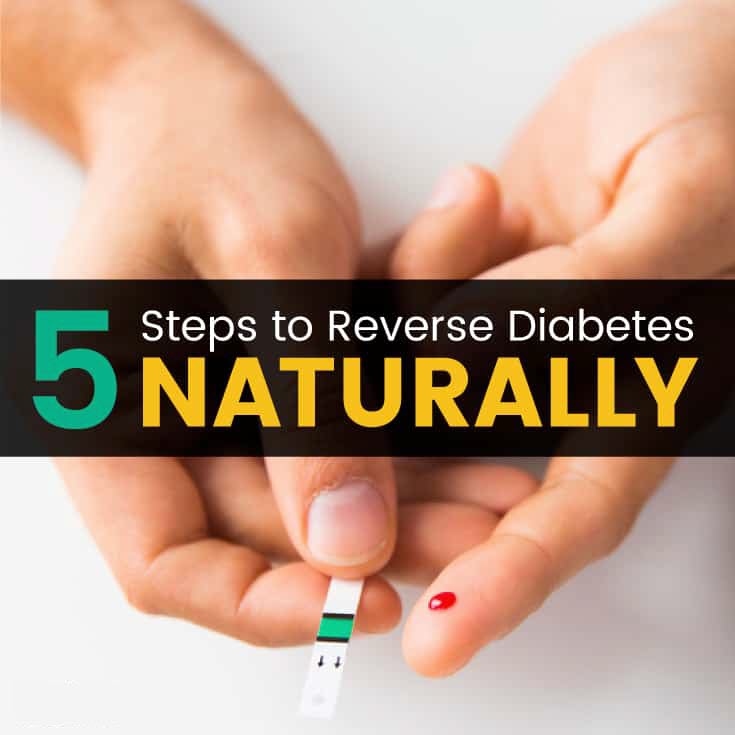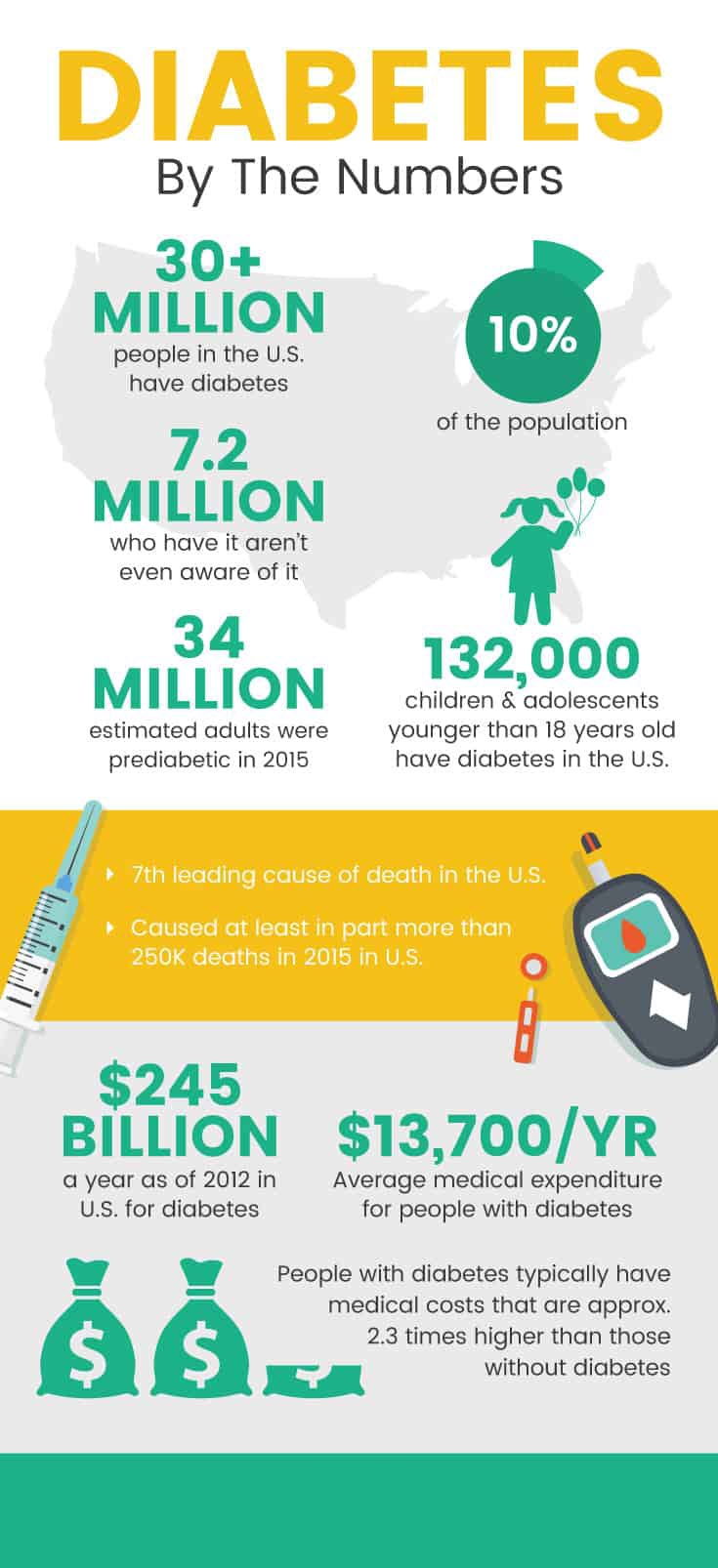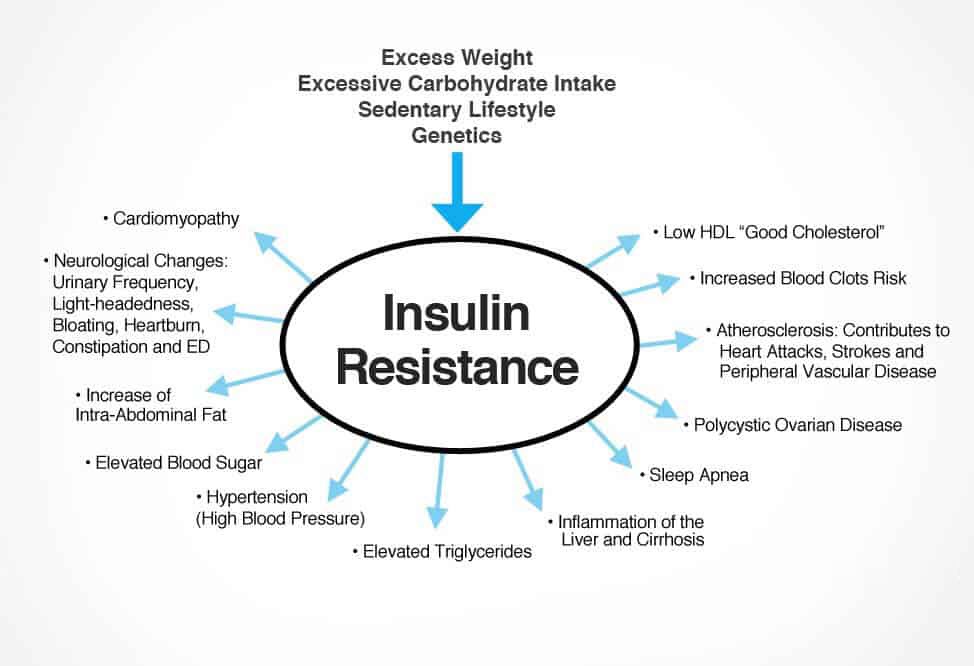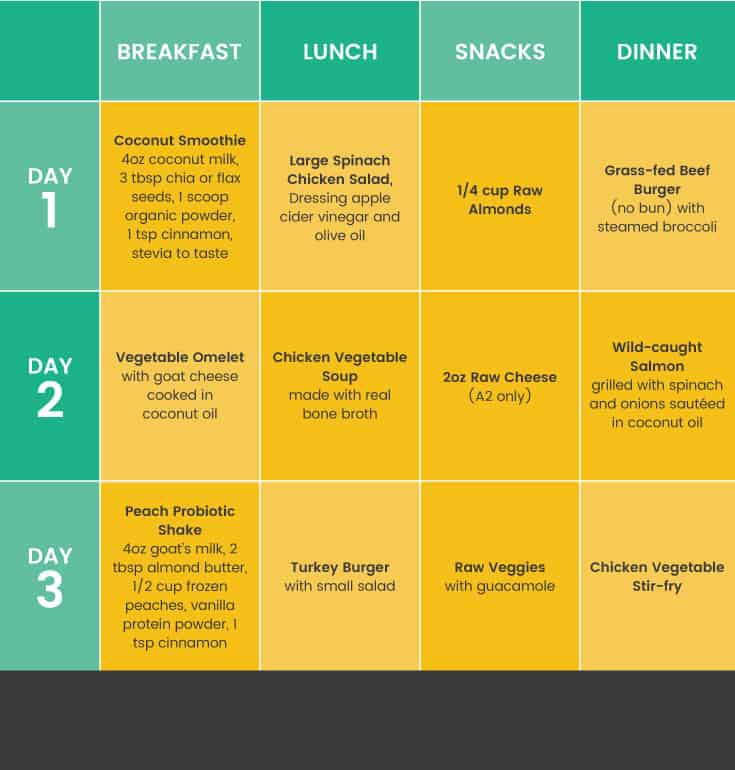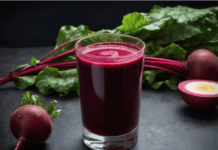How to Reverse Diabetes Naturally
According to the 2017 National Diabetes Statistics Report, over 30 million people living in the United States have diabetes. That’s almost 10 percent of the U.S. population.
And diabetes is the seventh leading cause of death in the United States, causing, at least in part, over 250,000 deaths in 2015.
That’s why it’s important to take steps to reverse diabetes and the diabetes epidemic in America.
Type 2 diabetes is a dangerous disease that can lead to many other health conditions when it’s not managed properly, including kidney disease, blindness, leg and foot amputations, nerve damage, and even death. (1)
Type 2 diabetes is a completely preventable and reversible condition.
With diet and lifestyle changes, you can greatly reduce your chances of getting the disease or reverse the condition if you’ve already been diagnosed.
If you are one of the millions of Americans struggling with diabetes symptoms, begin the steps to reverse diabetes naturally.
With my diabetic diet plan, suggested supplements, and increased physical activity, you can quickly regain your health and reverse diabetes the natural way.
The Diabetes Epidemic
Diabetes has grown to “epidemic” proportions. The latest statistics revealed by the U.S.
Centers for Disease Control and Prevention state that 30.3 million Americans have diabetes, including the 7.2 million people who weren’t even aware of it.
Diabetes is affecting people of all ages, including 132,000 children and adolescents younger than 18 years old. (2)
The prevalence of prediabetes is also on the rise, as it’s estimated that almost 34 million U.S. adults were prediabetic in 2015.
People with prediabetes have blood glucose levels that are above normal but below the defined threshold of diabetes.
Without proper intervention, people with prediabetes are very likely to become type 2 diabetics within a decade.
The cost of diabetes to our nation is a staggering $245 billion a year as of 2012.
The American Diabetes Association reports that the average medical expenditure for people with diabetes was about $13,700 per year.
People with diabetes typically have medical costs that are approximately 2.3 times higher than those without diabetes. (3)
Aside from the financial costs of diabetes, the more frightening findings are the complications and co-existing conditions.
In 2014, 7.2 million hospital discharges were reported with diabetes as a listed diagnosis.
Patients with diabetes were treated for major cardiovascular diseases, ischemic heart disease, stroke, lower-extremity amputation, and diabetic ketoacidosis.
The Cause of Diabetes
Diabetes is an illness related to elevated blood sugar levels.
When you stop releasing and responding to normal amounts of insulin after eating foods with carbohydrates, sugar, and fats, you have diabetes.
Insulin, a hormone that’s broken down and transported to cells to be used as energy, is released by the pancreas to help with sugar and fats’ storage.
But people with diabetes don’t respond to insulin properly, which causes high blood sugar levels and diabetes symptoms.
It’s important to note that there’s a difference between type 1 and type 2 diabetes. Here’s an explanation of the two types of diabetes and what causes these conditions:
Type 1 Diabetes
Type 1 diabetes is commonly called “juvenile diabetes” because it tends to develop at a younger age, typically before a person turns 20 years old.
Type 1 diabetes is an autoimmune disease where the immune system attacks the insulin-producing beta cells in the pancreas.
The damage to the pancreatic cells leads to a reduced ability or complete inability to create insulin.
Some of the common causes that trigger this autoimmune response may include a virus, genetically modified organisms, heavy metals, vaccines, or foods like wheat, cow’s milk, and soy. (4)
Food like wheat and cow’s milk has been linked to diabetes because they contain the proteins gluten and A1 casein.
These proteins can cause a leaky gut, which causes systemic inflammation throughout the body and can lead to autoimmune disease over time.
Type 1 diabetes is rarely reversed, but major improvements in blood sugar levels can be seen with the right dietary changes.
A person can often reduce his or her dependence on insulin and medications.
Type 2 Diabetes
Type 2 diabetes is the most common form of diabetes, and unlike type 1 diabetes, it usually occurs in people over the age of 40, especially those who are overweight.
Type 2 diabetes is caused by insulin resistance, which means that the hormone insulin is being released, but a person doesn’t respond appropriately.
Type 2 diabetes is a metabolic disorder that’s caused by high blood sugar.
The body can keep up for a period of time by producing more insulin, but the insulin receptor sites burn out over time.
Eventually, diabetes can affect nearly every system in the body, impacting your energy, digestion, weight, sleep, vision, and more. (5)
There are many underlying causes of type 2 diabetes, and the disease usually develops because of a combination of factors, including: (6)
- having a poor diet
- being overweight
- having high levels of inflammation
- living a sedentary lifestyle
- experiencing high amounts of stress
- having a family history of diabetes (especially a parent or sibling)
- having high blood pressure or a history of heart disease
- having a hormonal condition (like hyperthyroidism, polycystic ovary syndrome, or Cushing’s syndrome)
- being exposed to toxins, viruses, or harmful chemicals
- taking certain medications (like those that disrupt insulin production)
Thankfully, there are ways to reverse diabetes naturally.
5-Step Plan to Reverse Diabetes
Step 1: Remove These Foods to Reverse Diabetes Naturally
Certain foods negatively affect your blood sugar levels, cause inflammation, and trigger immune responses. To reverse diabetes naturally, the first step is to remove these foods from your diet:
- Refined sugar: Refined sugar rapidly spikes blood glucose, and soda, fruit juice, and other sugary beverages are the worst culprits. These forms of sugar enter the bloodstream rapidly and can cause extreme elevations in blood glucose. (7) Even though natural sweeteners like raw honey and maple syrup are better options, they can still affect blood sugar levels, so only use these foods on occasion. Your best option is to switch to stevia, a natural sweetener that won’t have as much of an impact.
- Grains: Grains, especially gluten-containing grains like wheat, contain large amounts of carbohydrates broken down into sugar within only a few minutes of consumption. Gluten can cause intestinal inflammation, affecting hormones like cortisol and leptin, leading to spikes in blood sugar. I recommend removing all grains from your diet for 90 days as your body adjusts to this healing program. Then you can try bringing sprouted ancient grains back into your diet in small amounts.
- Conventional cow’s milk: Conventional cow’s milk and dairy products should be eliminated, especially for people with type 1 diabetes. Dairy can be a fantastic food for balancing blood sugar from goats, sheep, or A2 cows. But stay away from all other forms of dairy because the A1 casein produced by conventional cows will harm the body and trigger an immune response similar to gluten. When buying dairy, only purchase raw and organic products from pasture-raised animals.
- Alcohol: Alcohol can dangerously increase blood sugar and lead to liver toxicity. Research published in Annals of Internal Medicine found a 43 percent increased incidence of diabetes associated with heavy alcohol consumption, which is defined as three or more drinks per day. (8) Beer and sweet liquors are especially high in carbohydrates and should be avoided.
- GMO foods: GMO corn, soy, and canola have been linked to kidney and liver disease and may promote diabetes. I suggest removing all GMO foods and all packaged foods from your diet. Opt for products that are labeled as organic or GMO-free.
- Hydrogenated oils: Remove hydrogenated, rancid oils from your diet, including vegetable oil, soybean oil, cottonseed oil, and canola oil. Because these oils are processed, treated at very high temperatures, and combined with bleaching agents and artificial dyes, consuming them has been linked to many health concerns, including diabetes.
Step 2: Incorporate These Foods to Treat Diabetes
To reverse or prevent type 2 diabetes, add the following foods into your diet:
- Foods high in fiber: Research shows that 90 percent of the U.S. population doesn’t consume enough fiber daily. High-fiber foods help slow down glucose absorption, regulate your blood sugar levels, and support detoxification. Aim to eat at least 30 grams of fiber per day, which can come from vegetables (like Brussels sprouts, peas, and artichokes), avocados, berries, nuts, and seeds, especially chia seeds and flaxseeds. (9)
- Foods high in chromium: Chromium is a nutrient that’s involved in normal carbohydrate and lipid metabolism. Foods high in chromium can improve your body’s glucose tolerance factor and naturally balance blood glucose levels. It plays a role in insulin pathways, helping bring glucose into our cells to be used for bodily energy. Broccoli has the highest chromium amounts, but you can also find it in raw cheese, green beans, brewer’s yeast, and grass-fed beef. (10)
- Magnesium-rich foods: Magnesium can help regulate blood sugar levels because it plays a role in glucose metabolism. Research shows that diabetes is frequently associated with magnesium deficiency. Eating magnesium-rich foods, like spinach, chard, pumpkin seeds, almonds, yogurt, and black beans, can improve type 2 diabetes symptoms. (11)
- Healthy fats: Medium-chained fatty acids found in coconut and red palm oil can help balance blood sugar levels, and they serve as the preferred fuel source for your body rather than sugar. Using coconut milk, ghee, and grass-fed butter can also help balance your blood sugar levels, including these foods in your meals and smoothies. Some research suggests that a high-fat, low-carb diet known as the keto diet may be a novel approach to reverse diabetes naturally. However, you don’t technically have to go into ketosis to achieve the benefits of healthy fats in treating diabetes. (12)
- Clean protein: Eating protein foods has a minimal effect on your blood glucose levels, and it can slow down the absorption of sugar. Some of the best clean protein sources include wild-caught fish, which contains omega-3 fats that reduce inflammation, grass-fed beef, organic chicken, lentils, eggs, and bone broth.
- Foods with a low glycemic load: The glycemic index of a food tells you about the food’s blood glucose-raising potential. Foods with a high glycemic index are converted into sugar after being eaten more quickly than low glycemic foods. If you are fighting diabetes, stick to low glycemic foods like non-starchy vegetables, stone fruits and berries, nuts, seeds, avocados, coconut, organic meat, eggs, wild-caught fish, and raw pastured dairy.
One benefit of these foods is that they generally promote weight loss, which is a major factor in reversing diabetes.
A study following 306 diabetic individuals found that losing weight under a structured program (with a primary care physician) resulted in almost half of the participants going into total diabetes remission.
This means they could stay off their medications permanently (assuming they stayed on a healthy diet).
Quality of life also improved by over seven points on average for the patients on the dietary regimen, while it decreased by about three points for the control group. (13)
Step 3: Take These Supplements for Diabetes
1. Chromium Picolinate
Taking 200 micrograms of chromium picolinate three times daily with meals can help improve insulin sensitivity.
A review published in Diabetes Technology and Therapeutics evaluated 13 studies that reported significant improvement in glycemic control and substantial reductions in hyperglycemia and hyperinsulinemia after patients used chromium picolinate supplementation.
Other positive outcomes from supplementing with chromium picolinate included reduced cholesterol and triglyceride levels and reduced hypoglycemic medication requirements. (14)
2. Cinnamon
Cinnamon has the ability to lower blood sugar levels and improve your insulin sensitivity.
A study conducted at the Western University of Health Sciences in Pomona, Calif. found that the consumption of cinnamon is associated with a statistically significant decrease in plasma glucose levels, LDL cholesterol, and triglyceride levels.
Cinnamon consumption also helped increase HDL cholesterol levels. (15)
To take advantage of cinnamon’s many health benefits, add one teaspoon to food, smoothies, or tea.
You can also take one to two drops of cinnamon essential oil internally by adding it to food or tea, or combine three drops of cinnamon oil with half a teaspoon of coconut oil and massage it into your wrists and abdomen.
3. Fish Oil
Taking a fish oil supplement can help improve markers of diabetes by reducing triglyceride levels and raising HDL cholesterol levels.
Research published in the Journal of Research in Medical Sciences shows that omega-3 fatty acids found in fish oil are necessary for proper insulin function, preventing insulin intolerance, and reducing inflammation.
(16) To use fish oil as a natural remedy for diabetes, take 1,000 milligrams daily.
4. Alpha Lipoic Acid
Alpha-lipoic acid is an antioxidant that helps turn glucose into fuel for the body.
It effectively improves insulin sensitivity and reduces symptoms of diabetic neuropathy, such as weakness, pain, and numbness caused by nerve damage.
Although we make alpha lipoic acid, and it can be found in some food sources, like broccoli, spinach, and tomatoes, taking an ALA supplement will increase the amount that circulates in your body, which can be extremely beneficial when trying to reverse diabetes naturally. (17)
5. Bitter Melon Extract
Bitter melon helps lower blood glucose levels, and it regulates the body’s use of insulin.
Studies show that bitter melon extract can help reduce and manage symptoms of diabetes, including insulin resistance, heart complications, kidney damage, blood vessel damage, eye disorders, and hormone irregularities. (18)
Step 4: Follow This Eating Plan to Reverse Diabetes
If you want to balance your blood sugar and see results quickly, then follow this diabetes eating plan as closely as possible.
Focus on getting plenty of clean protein, healthy fats, and fiber into every meal, helping reverse diabetes.
Start by trying these first three days of the plan, and then use a combination of these foods going forward.
Review the list of foods that you should be eating from Step 2, and bring those healthy, diabetes-fighting foods into your diet as well.
It may seem like a major change to your diet at first, but after some time, you will begin to notice the positive effects these foods are having on your body.
Step 5: Exercise to Balance Blood Sugar
Exercise reduces chronic disease and can help reverse diabetes naturally.
Studies show that exercise improves blood glucose control and can prevent or delay type 2 diabetes while positively affecting your blood pressure, heart health, cholesterol levels, and life quality. (19)
Exercise naturally supports your metabolism by burning fat and building lean muscle. To prevent and reverse diabetes, make exercise a part of your daily routine.
This doesn’t necessarily mean that you have to spend time at the gym.
Simple forms of physical activity, like getting outside and walking for 20 to 30 minutes every day, can be extremely beneficial, especially after meals.
Practicing yoga or stretching at home or in a studio is another great option.
In addition to walking and stretching exercises, try interval training cardio, like burst training or weight training three to five days a week for 20–40 minutes.
Burst training can help you burn up to three times more body fat than traditional cardio and can naturally increase insulin sensitivity.
You can do this on a spin bike with intervals or try burst training at home.
Strength training using free weights or machines is also recommended because it helps you build and maintain muscle, supporting balanced blood sugar and sugar metabolism.
Final Thoughts
- More than 30 million people — nearly 10 percent of the population — have diabetes in the U.S., including children. Almost 7.2 million of those people aren’t even aware of it.
- Another 34 million adults are prediabetic.
- It’s the seventh leading cause of death in the U.S. and costs hundreds of billions of dollars per year.
- Type 1 diabetes typically occurs before someone turns 20 and is rarely reversed, but it can be managed through diet and lifestyle changes.
- Type 2 diabetes is more common and usually occurs in people over 40, especially if they’re overweight.
- To reverse diabetes naturally, remove foods like refined sugar, grains, conventional cow’s milk, alcohol, GMO foods, and hydrogenated oils from your diet; incorporate healthy foods like foods high in fiber, chromium, magnesium, healthy fats, and clean protein, along with foods with low glycemic loads; take supplements for diabetes; follow my diabetic eating plan, and exercise to balance blood sugar.
References
- American Diabetes Association
- U.S. Centers for Disease Control and Prevention
- Western University of Health Sciences in Pomona.
- Diabetes Technology and Therapeutics

